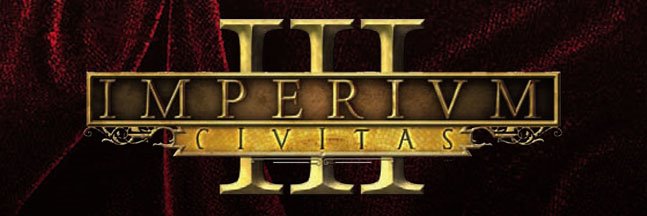I want to share with you some interesting facts about Roman social classes and public display. This introductory article will lead you to my final and personal opinion about citybuilding games behavior/interaction.
Rome was a highly hierarchical and class-conscious society, but there was the possibility of mobility between most classes because, by the second century BCE, class was no longer determined solely by birth. There was a large gulf between the wealthy upper classes and the poorer lower ones, although quite difficult, it was still possible to move socially upwards by acquiring sufficient wealth.
Upper Classes
Senatorial class (senatores): The basis for this class was political. This class was dominated by the nobles, families whose ancestors included at least one consul. Senators had to prove that they had property worth at least 1.000.000 sesterces. There was no salary attached to service in the Senate, and senators were prohibited from engaging personally in nonagricultural business, trade or public contracts.
Equestrian class (equites): The basis for this class was economic. A man could be formally enrolled in the equestrian order if he could prove that he possessed a stable minimum amount of wealth (property worth at least 400.000 sesterces). However, if an equestrian was elected to a magistracy and entered the Senate, he moved up to the senatorial class; this was not particularly easy or frequent. Equestrians were primarily involved in the types of business prohibited to senators.
Lower Classes
Commons (plebs or vulgus): all other freeborn Roman citizens. All Roman citizens had the right to contract a legal marriage with another Roman citizen and beget legitimate children who were themselves Roman citizens.
Freedpeople (liberti or libertini): men and women who had been slaves but had bought their freedom or been manumitted (freeing a slave at the will of the owner). They were not fully free because they had various restrictions on their rights and owed certain duties to their former masters, who now became their patrons. They could become citizens if their former masters were citizens and they had been formally manumitted; they were not, however, eligible for public office. This was the one class it was not possible to leave, though the class encompassed only one generation. The next generation, their freeborn children, became full citizens and could even become equestrians if rich enough. Freedpeople had low social status, and most were probably fairly poor, but it was possible for them to achieve some success in a trade, and a few might even become wealthy.
Slaves (servi): system of chattel slavery where human beings were born into slavery or sold into slavery through war or piracy. Slaves were the property of their owners by law, but by custom some slaves (especially urban, domestic slaves) might be allowed their own savings with which they might later buy their freedom. If their masters could manumit them, some mobility into the freedpeople class was possible.
You can access to full article on this webpage.
Next article: Taxes in the Roman Empire
Rome was a highly hierarchical and class-conscious society, but there was the possibility of mobility between most classes because, by the second century BCE, class was no longer determined solely by birth. There was a large gulf between the wealthy upper classes and the poorer lower ones, although quite difficult, it was still possible to move socially upwards by acquiring sufficient wealth.
Upper Classes
Senatorial class (senatores): The basis for this class was political. This class was dominated by the nobles, families whose ancestors included at least one consul. Senators had to prove that they had property worth at least 1.000.000 sesterces. There was no salary attached to service in the Senate, and senators were prohibited from engaging personally in nonagricultural business, trade or public contracts.
Equestrian class (equites): The basis for this class was economic. A man could be formally enrolled in the equestrian order if he could prove that he possessed a stable minimum amount of wealth (property worth at least 400.000 sesterces). However, if an equestrian was elected to a magistracy and entered the Senate, he moved up to the senatorial class; this was not particularly easy or frequent. Equestrians were primarily involved in the types of business prohibited to senators.
Lower Classes
Commons (plebs or vulgus): all other freeborn Roman citizens. All Roman citizens had the right to contract a legal marriage with another Roman citizen and beget legitimate children who were themselves Roman citizens.
Freedpeople (liberti or libertini): men and women who had been slaves but had bought their freedom or been manumitted (freeing a slave at the will of the owner). They were not fully free because they had various restrictions on their rights and owed certain duties to their former masters, who now became their patrons. They could become citizens if their former masters were citizens and they had been formally manumitted; they were not, however, eligible for public office. This was the one class it was not possible to leave, though the class encompassed only one generation. The next generation, their freeborn children, became full citizens and could even become equestrians if rich enough. Freedpeople had low social status, and most were probably fairly poor, but it was possible for them to achieve some success in a trade, and a few might even become wealthy.
Slaves (servi): system of chattel slavery where human beings were born into slavery or sold into slavery through war or piracy. Slaves were the property of their owners by law, but by custom some slaves (especially urban, domestic slaves) might be allowed their own savings with which they might later buy their freedom. If their masters could manumit them, some mobility into the freedpeople class was possible.
You can access to full article on this webpage.
Next article: Taxes in the Roman Empire

No comments:
Post a Comment